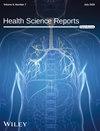Environmental Health Risk Evaluation and Potential to Cause Disease X as a Global Pandemic: A Call for Global Preparedness
Abstract
Background and Aims
Emerging infectious diseases pose a constant threat to global health and the economy. Among them, the concept of “disease X” has emerged owing to the uncertainty about the identity of the pathogen that may cause the next pandemic. Disease X has gained significant attention due to its potential to cause a public health emergency in the future. This study aimed to investigate disease X, identify the key risk factors leading to its emergence and spread, and propose strategies to prevent future global pandemics.
Methods
We performed a comprehensive literature review and identified relevant information for this study. Pandemic, public health emergency, and infectious disease were used as keywords for the literature search.
Results
Our study indicates that disease X could be a life-threatening or global pandemic. Among the various risk factors, climate change, increased animal-human contact, and the emergence of antibiotic resistance are some risk factors that may lead to a pandemic because they help in the transmission of zoonotic infections. Here, we have discussed some potential pathogens, including bacteria, viruses, and fungi, that are capable of causing disease X. Finally, we have indicated some necessary measures required for the prevention and management of any future global pandemic.
Conclusion
Disease X has already posed a substantial threat to the global health system, warranting urgent attention and action. Comprehensive preparedness measures, including robust surveillance systems, early detection, and vaccine development, are essential for mitigating the risk posed by disease X. Collaboration among healthcare organizations, research communities, and government bodies is essential for resilience against future pandemics.

 求助内容:
求助内容: 应助结果提醒方式:
应助结果提醒方式:


